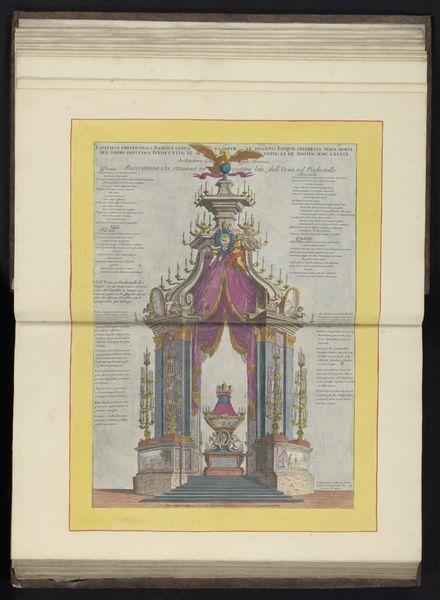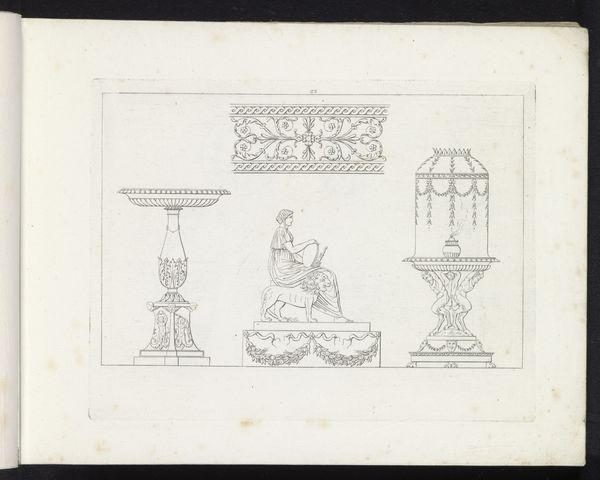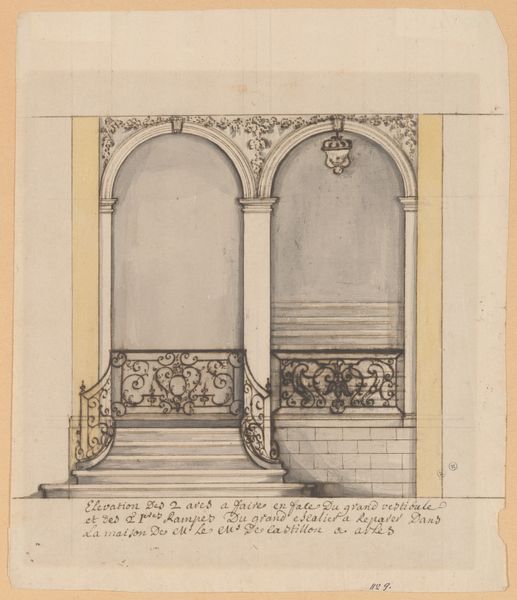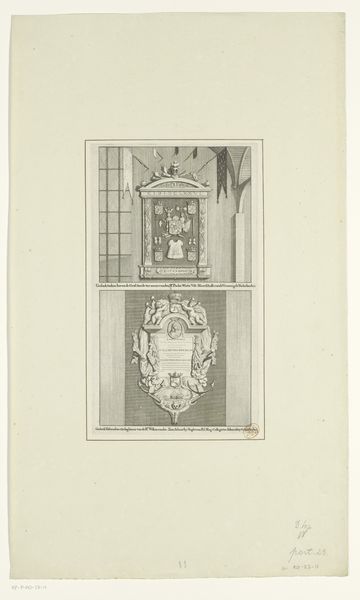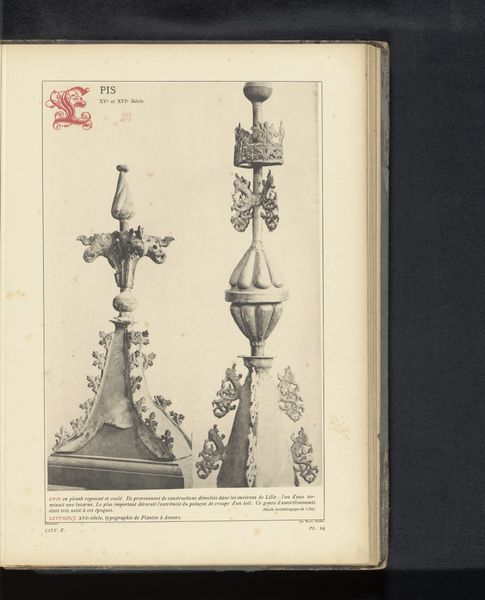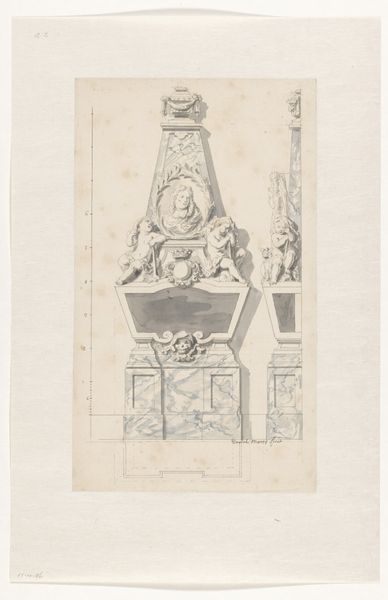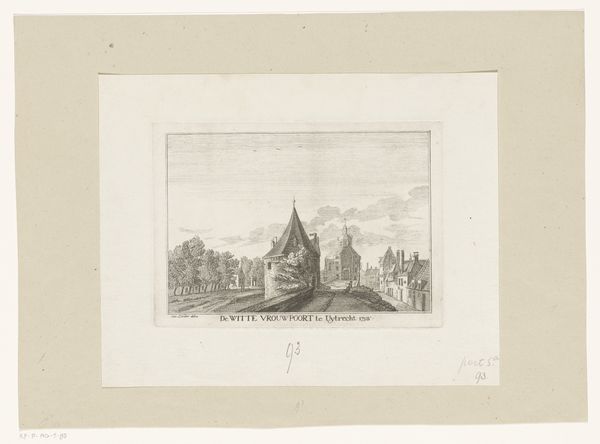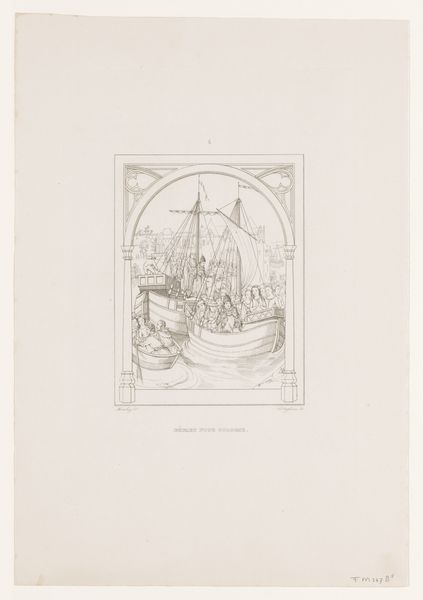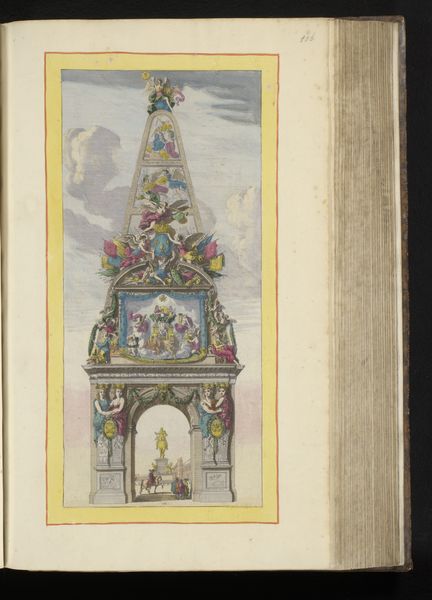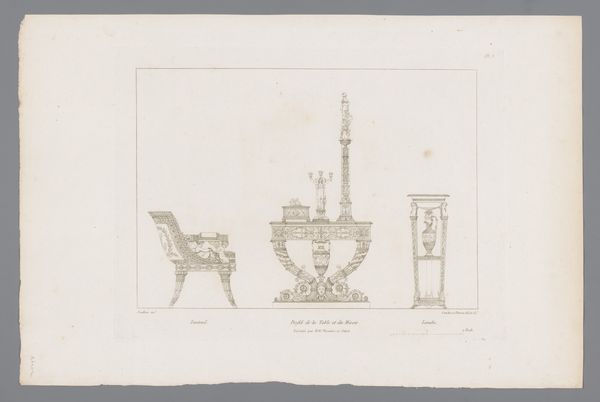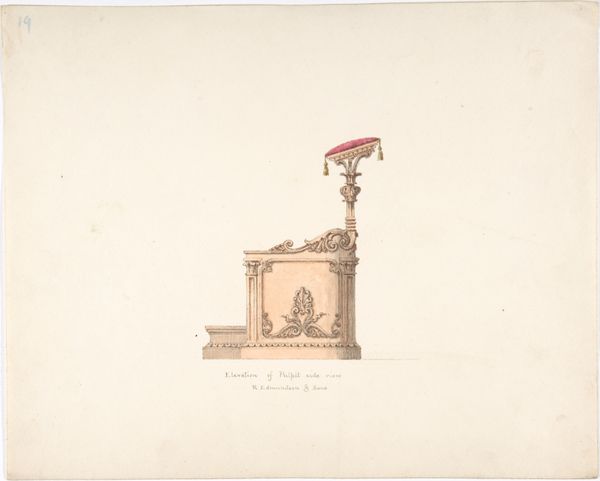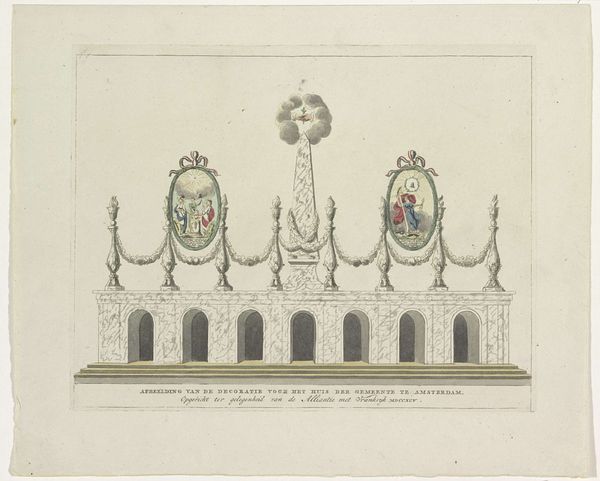
drawing, pen
#
drawing
#
neoclacissism
#
landscape
#
pen
#
cityscape
Dimensions: height 242 mm, width 307 mm
Copyright: Rijks Museum: Open Domain
Editor: Here we have "Decoration in the Plantage, 1795," a pen and watercolor drawing by an anonymous artist currently residing at the Rijksmuseum. There's something very rigid and diagrammatic about its composition. What's your interpretation? Curator: It is rigid. I see this not just as a representation of an object, but an assertion of power. The late 18th century saw a rise in Neoclassicism, and this monument clearly participates in that visual language. Given its purpose, likely commemorating some event, its geometric precision speaks volumes. The use of the obelisk form harkens back to Egyptian power structures, resurrected and re-contextualized by European powers. But consider also the 'decoration' itself – what kind of societal values were being projected here, and for whom? Editor: So it's not just a picture of a pretty monument, but a symbol of… societal ambitions? It also looks so fragile, considering what you just said. Curator: Exactly. The delicacy of the drawing might even subtly undermine the grand aspirations of the monument. Notice also the inscriptions on the side, alongside depictions of people – presumably the ones the monument is honoring. How are they represented? Are their contributions fairly acknowledged? Who gets to control this narrative? Such questions become particularly potent if we look at this drawing through a lens of post-colonial criticism, even if Amsterdam and the Netherlands may seem like an unusual space for it. How do you feel, considering this was made at the apex of Dutch colonial power? Editor: I guess, understanding the context, I can see how something so formal can still speak to complex power dynamics and who's remembered or forgotten in the process. I appreciate the change in my perception. Curator: And I find fresh perspectives looking at this period in Amsterdam, knowing the social unrest and changing political values of the late 18th century, leading to questioning authority, gender dynamics, and class differences.
Comments
No comments
Be the first to comment and join the conversation on the ultimate creative platform.
